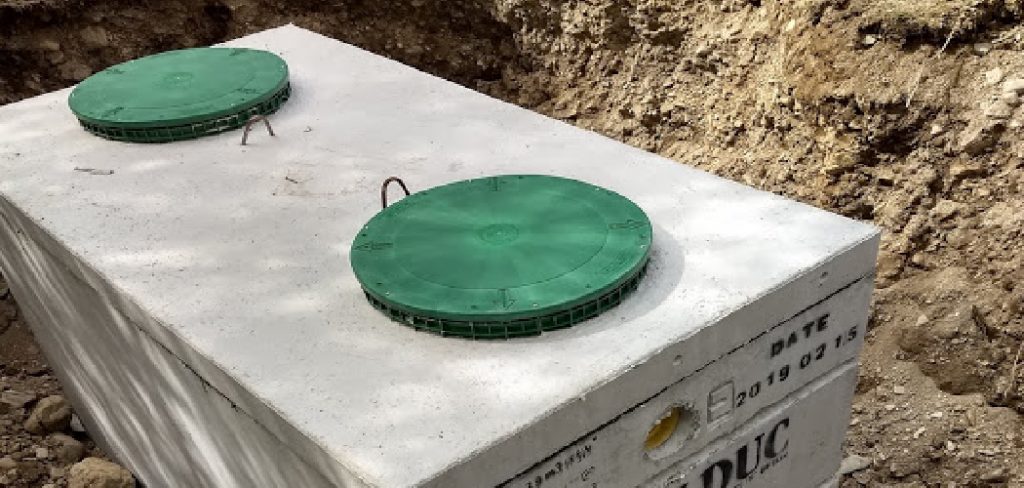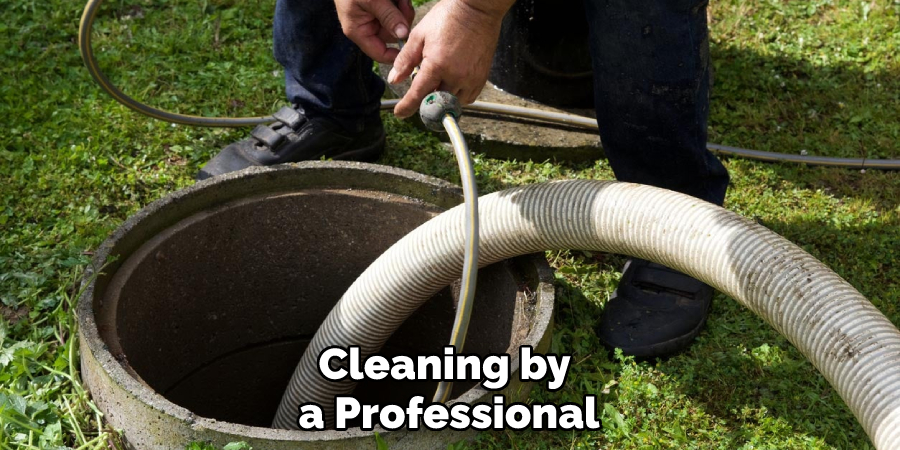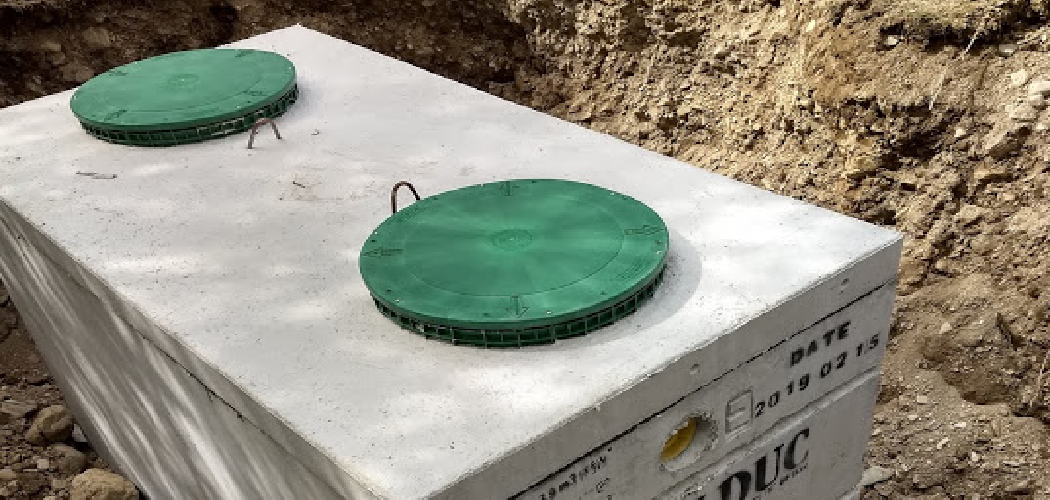Designing a septic system for your house can be a daunting task. Among the many critical steps involved in septic system design, sizing the septic tank correctly is one of the most important. But how do you determine the right size for a septic tank?

This comprehensive guide will take you through everything you need to know about how to size a septic tank. You’ll find all the answers you are looking for, from the factors to consider, regulations in your area, the actual sizing process, and maintenance measures.
Can You Size a Septic Tank?
Sizing a septic tank is a crucial task when it comes to designing a new septic system or replacing an old one. A septic tank captures and retains wastewater from your home’s plumbing system. The size of the septic tank depends on various factors, including the number of bedrooms in your home, the number of occupants, and the daily water usage.
In addition, the type of soil in your area and the location of the septic tank also play a role in determining the ideal size. If you want to ensure that your septic system operates effectively and efficiently, it’s essential to get your tank sized correctly by a professional septic designer or engineer.
With the right-sized septic tank, you can rest assured that your household wastewater is being treated appropriately without any harm to the environment or the health of your family.
Why Should You Size a Septic Tank?
Regarding septic tanks, it’s important to ensure you have the right size for your household’s needs. An undersized tank can lead to backups and unpleasant odors, while an oversized tank can be wasteful and expensive to install.
Sizing your septic tank properly ensures that it can handle the amount of waste generated by your household while also allowing for some room to grow if your family expands or your water usage increases.

A properly sized septic tank can save you money in the long run by minimizing the need for repairs and maintenance while also promoting a healthier environment for you and your neighbors. So don’t overlook the importance of sizing a septic tank – it’s crucial to maintaining a functional and efficient septic system.
How to Size a Septic Tank: A Comprehensive Guide
Step 1: Estimating House Size
The primary factor to consider when sizing a septic tank is the size of your house or property. You need to estimate the number of bedrooms, the number of people living in the house, and the number of water fixtures.
On average, the rule of thumb is that one or two-bedroom homes require a 750-900-gallon septic tank while 3-4 bedroom homes require a 1000-gallon septic tank. However, the number of people living in the house may affect this estimate, so it is essential to consider it.
Step 2: Soil Test
The type of soil on your property also significantly impacts the sizing of the septic tank. You need to hire a professional to carry out a soil test and check for variables such as permeability.
This test will determine the groundwater level, soil permeability, and how much water your soil can absorb. These factors are essential to size a septic tank that can accommodate the amount of water a household produces.
Step 3: Hydraulics and Regulations
Once you have determined the size of your tank based on the number of bedrooms and soil test results, ensure that the design complies with your state regulations. Different states have different septic system regulations.
You need to familiarize yourself with these regulations and any other applicable building codes in your locality. Besides this, you also need to ensure that rules regarding hydraulics, such as flow rate and velocity, are compliant.
Step 4: Maintenance Measures
When sizing the septic tank, it is essential to consider maintenance measures, such as pump-outs and the frequency at which you’ll need them. Septic tank cleaning by a professional can keep your system operational for years, but it can be expensive, so it is critical to have this in mind when sizing your septic tank. Make sure that the septic tank has enough room for proper solids settling and the pump-out frequency you require.

Step 5: Hiring a Professional
Sizing a septic tank can be overwhelming but important. Consulting a professional can make the process smooth and increase the chances of an accurate assessment.
Professionals have the knowledge and experience to conduct a soil test, evaluate your household’s water usage, and accurately estimate the septic tank’s size. Consulting a skilled expert will ensure an adequate and efficient septic system that meets your needs.
Step 6: Consider Other Factors
Apart from the size of your house and soil type, there are other factors to consider when sizing a septic tank. These include the type of wastewater produced, the amount of wastewater generated by your household tasks, and water usage for dishwashing, laundry, bathing, and toilet flushing.
All these factors should be taken into account when sizing the septic tank.
Step 7: Choose the Right Tank
Once you have determined all the factors and consulted a professional, it is time to choose the right tank for your property. You need to decide between a concrete, plastic, or fiberglass septic tank. Take into consideration how long you plan to stay in the house and your budget. Ensure that the tank complies with your local installation and maintenance regulations.
That’s it! You’ve now learned how to size a septic tank. Remember to consult a professional and follow all safety guidelines when installing your new system. With the right installation and regular maintenance, you can ensure that your septic system runs efficiently for years to come. Good luck!
5 Considerations Things When You Need Size a Septic Tank
1. The Number of Bedrooms in Your Home
One of the primary considerations when sizing a septic tank is the number of bedrooms in your home. The average septic tank can hold approximately 1,000 gallons of wastewater, so you will need to determine how much wastewater your home produces on a daily basis. A good rule of thumb is that each bedroom in your home will generate approximately 50 gallons of wastewater per day.
2. The Average Daily Water Usage
Another consideration when sizing a septic tank is your household’s average daily water usage. This includes the water used for showering, cooking, and cleaning and the water used for laundry, dishwashing, and watering plants. A family of four uses approximately 400 gallons of water per day, so you must determine your family’s average daily water usage.
3. The Type of Soil on Your Property
The type of soil on your property is another important consideration when sizing a septic tank. Sandy soil drains quickly and does not allow for proper treatment of sewage, while clay soil does not drain well and can cause problems with leach fields. Loam soil is considered to be the best type of soil for septic systems as it drains well and allows for the proper treatment of sewage.
4. The Size of Your Property
The size of your property is also an important consideration when sizing a septic tank. If you have a large property, you will need a larger septic tank in order to accommodate the additional wastewater generated by your home. Conversely, if you have a small property, you may be able to get away with a smaller septic tank.
5. Local Septic Regulations
Finally, you will need to consider any local septic regulations that may be in place in your area. These regulations can vary depending on where you live, so it is important to check with your local authorities before choosing a septic tank size.

Benefits of Sizing a Septic Tank
Maintaining a septic system can be daunting, but sizing your septic tank can make all the difference. By appropriately determining the size of your septic tank, you can avoid overflowing, clogs, and backups, ensuring optimal performance and longevity of your septic system.
Additionally, a correctly sized tank can provide better treatment of wastewater by allowing solids to settle and separate from the water, leading to a healthier environment for you and your family.
Sizing your septic tank may require the assistance of a licensed professional, but it can save you time, money, and headaches in the long run. So why not invest in the benefits of a properly sized septic tank and enjoy peace of mind, reliable performance, and healthier living conditions?
Some Common Mistakes People Make When Trying to Size a Septic Tank
Let’s face it – sizing a septic tank is not exactly the most exciting task in the world. However, it is crucial to maintain a healthy and functional septic system. Unfortunately, many people make common mistakes when it comes to sizing their septic tanks. One of the biggest mistakes is underestimating the size of the tank needed.
A septic tank that is too small will constantly overflow and cause expensive and messy backups. Another mistake is failing to consider the number of people residing in the home or the amount of water usage. This can result in a tank that is not equipped to handle the household’s waste, leading to costly repairs. Ultimately, taking the time to size your septic tank properly can save you time and money in the long run.

Conclusion
Sizing a septic tank is an integral part of designing a septic system, but understanding the process is not easy. When considering the tank size, you need to estimate the number of occupants and the water usage, carry out a soil test, and ensure the regulations and maintenance requirements are taken into consideration.
Hiring a professional can be the difference between a well-engineered system and one that fails sooner than later. Before hiring a septic system expert, take the time to conduct your research and familiarize yourself with the process. This guide gives you the knowledge and confidence to size your septic tank correctly. Thanks for reading our post about how to size a septic tank

